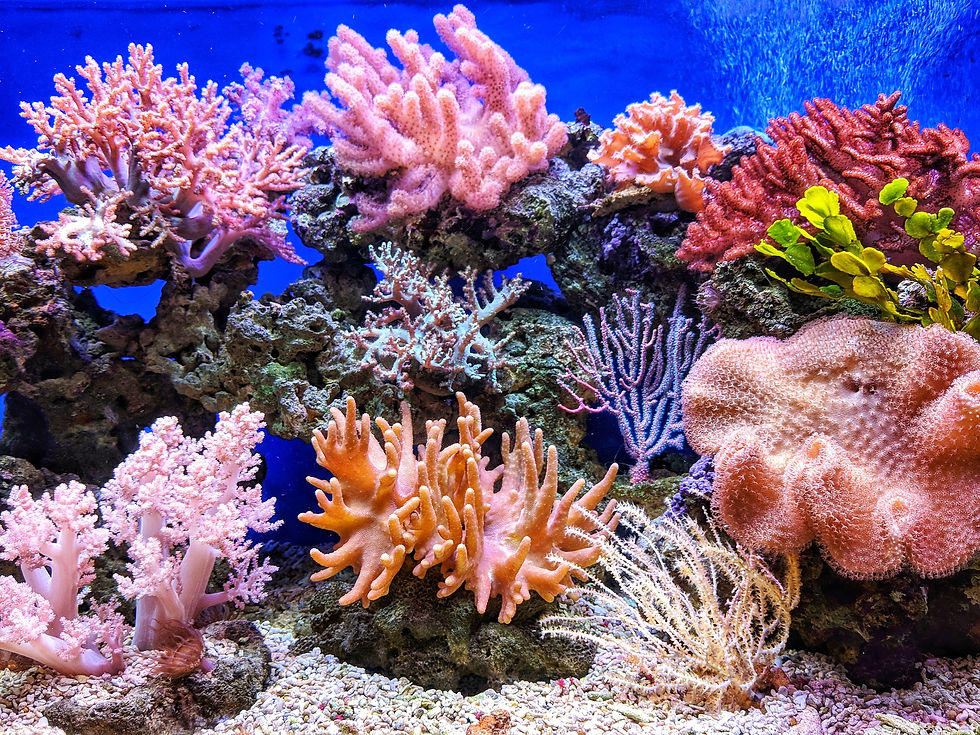Keeping Fashion Outside the Ocean
- Beatriz Ramoz

- Jun 8, 2021
- 3 min read
Updated: Aug 16, 2021
Ideologies that the planet’s elements are an endless resource, has been ingrained into society for a while. So much that the idea that we will run out of clean water globally, seems absurd. The wasteful nature of humans has come to light in recent years. We can no longer ignore the pleads for change.
Now, more than ever, sustainable fashion has become not only a consumer concern but a seller responsibility. Shopper demands have been causing apparel brands to devote themselves to sustainable fashion.
With an evident focus for more responsibly-made products. So much that there’s a new ambition for the fashion industry. Some say it’s circular fashion, but that is just the beginning.
The matter of microfibres
Did you know that between half a million and one million microfibres are released annually into our oceans? Just from washing synthetic clothes. To put that into perspective; that’s 50 million plastic bottles. Synthetic clothes like fleece, acrylic, and polyester release thousands of microscopic fibres every wash.
72% of all sites in England have plastic fibres in their water. Including a fancy gentleman’s club in Chelsea that charge over a grand and a half a week just to attend. All while having plastic water running through their taps.
This pollution of our planet’s seas not only affects little crabs all the way to killer whales, it affects the entire human race. It enters human food chains, shockingly leaving eco-systems off balance. It’s scary to think that we, as the human race, have produced more plastic in the last ten years than we have in the last century.
Simply for cheaper and easier means of production. We have seen the consequences, and will only see more drastic outcomes if we don’t reinvent the way we create fashion. Some brands have already made the move.
Taking the initiative
Several fashion brands are taking crucial steps. Mountains of recycled materials being pulled from the sea to eventually be put into production models. Rip Curl Ltd. has managed to create a 100% recycled line of mountain wear. The “Rip Curl Search Series” delivers a sustainable and durable alternative for mindful consumers.
Rip Curl has introduced a new polybag that contains 40% less plastic by weight that’s made with 30% recycled plastic. They’ve also pushed for change by giving back to the community. They have taken part in many campaigns to clean up beaches. Action in partnering with companies to help stop plastic pollution, all while making stylish swimsuits. Finally, guilt-free shopping is achievable.
Parley first contributed its eco-friendly, up-cycled fabrics to adidas in 2015 in a history-making collaboration. The world’s first pair of ocean-conscious trainers. The NMD CS1 Parley has a contoured, sock-like fit, and the yarn is made from plastic waste. Slowly but surely, waste has been intercepted from beaches and coastal communities before it reaches our oceans.
Spiders, really?
Surprisingly, spiders produce naturally biodegradable silk fibres with remarkable properties such as high elasticity, durability, and softness.
Humans have developed technology with less environmental impact than traditional textile manufacturing. Replication of this amazing process has been moving at a large scale. Manufacturers have made a variety of products with it already.
In July 2019, Stella McCartney and adidas unveiled the Biofabric Tennis Dress. The tennis dress was created with a Microsilk and cellulose blend fibre. Designed to be fully biodegradable. Their Microsilk sold out in minutes. The very first commercially available product made of spider silk.
Circular fashion has made headlines in recent years. It’s an innovative way to keep clothes in circulation and not hurt the planet. With a circular mentality, it creates a future for old clothes. Every garment would have a chance of being new again. Consumers would love to see that something as simple as recycling or returning these garments has such a positive impact.
The drive for change
The challenging (some would say exciting) combination of sustainability and change makes a worthy opponent for fashion. The drive for more environmentally friendly products incentives and inspires designers and artists to think outside of their accustomed ways of producing. By not using harmful to our environment that will end up in the ocean.
Demand is skyrocketing as consumers command answers from wasteful brands. But a new ambition for the fashion industry is coming together. To use resources that are helpful rather than harmful to our planet. We need to radically rethink design, uses, sale, and disposal.
Despite positive moves in the right direction, there is still a long way to go. Let’s make ambition become a reality.



Comments